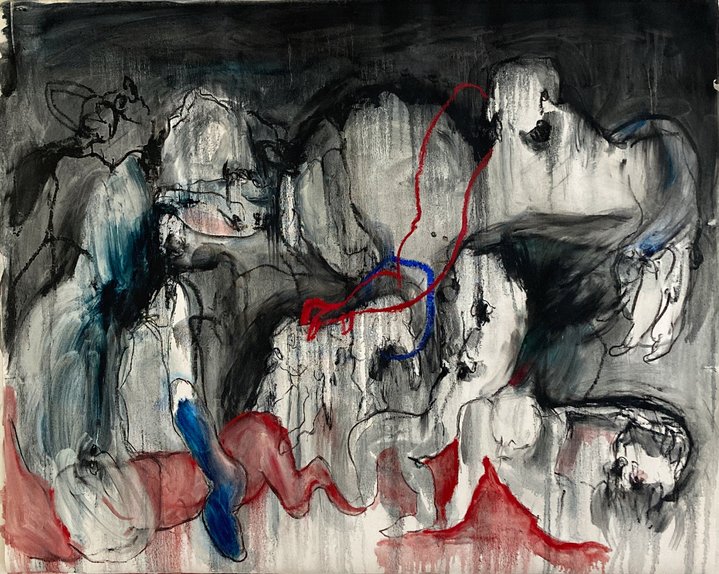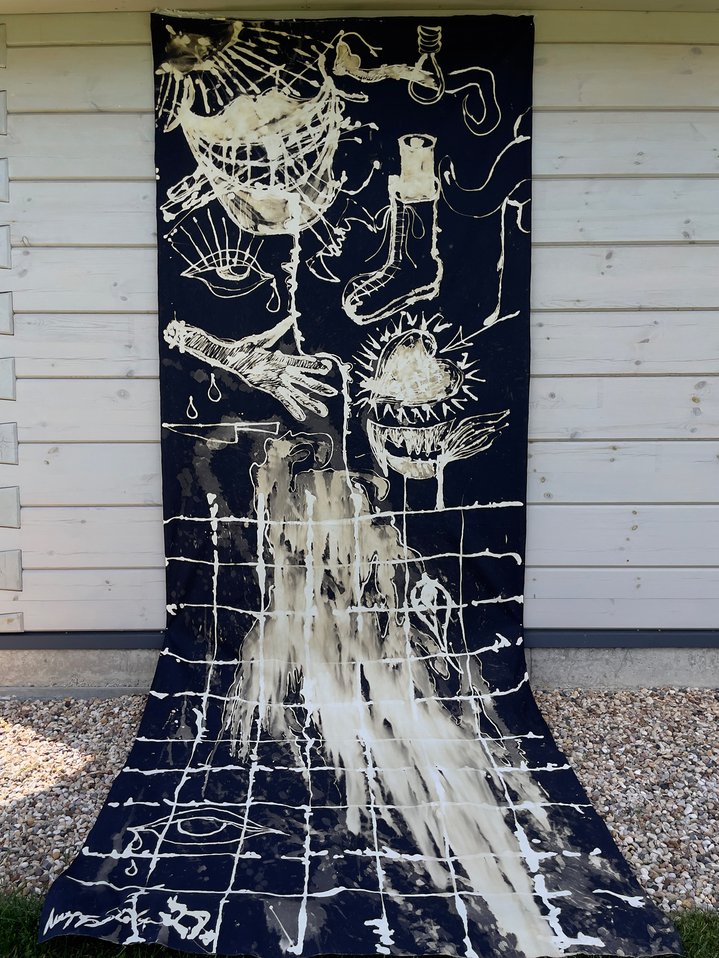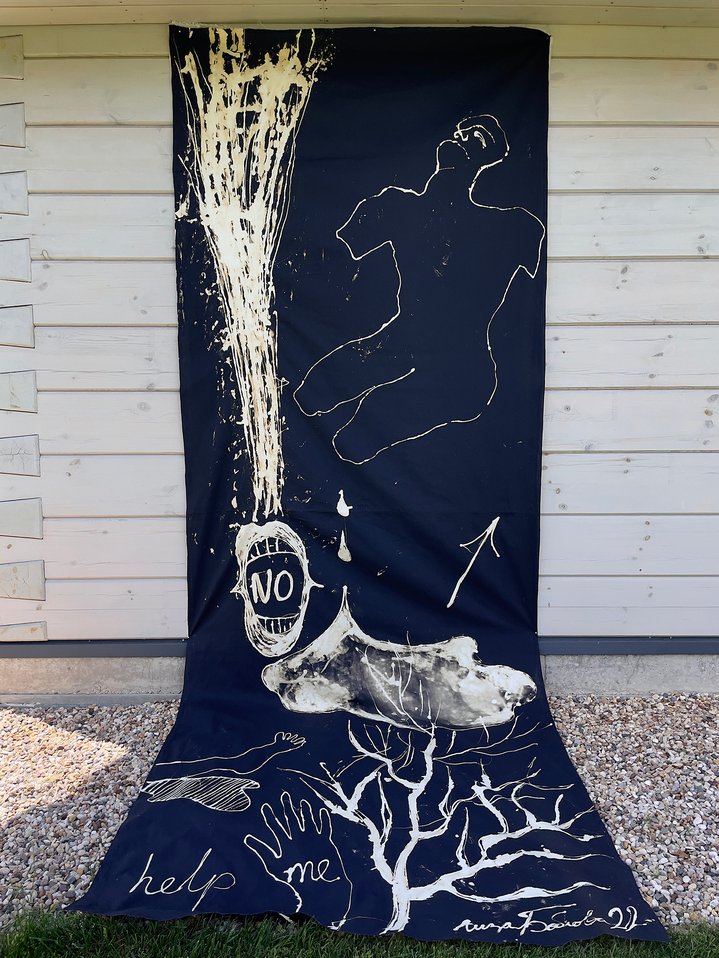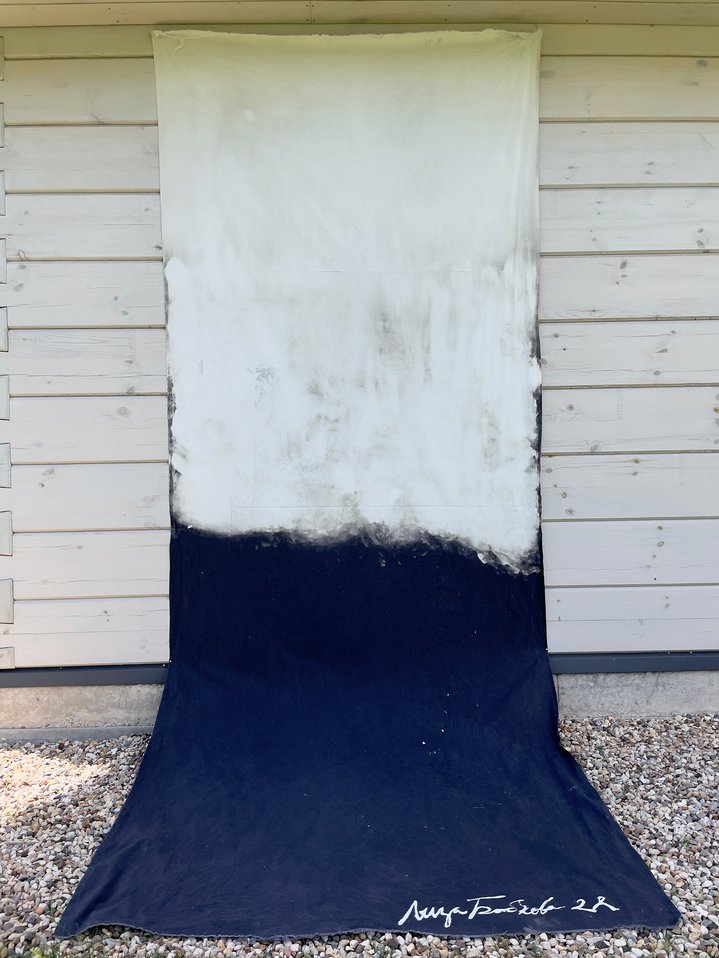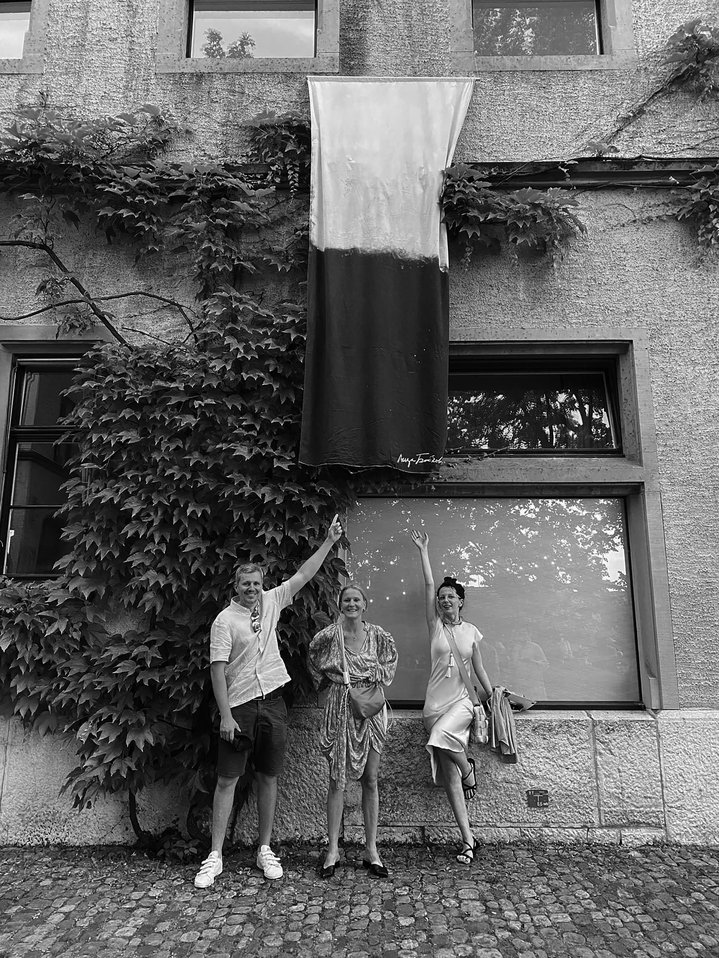Liza Bobkova and Irina Petrakova: having their say in Basel
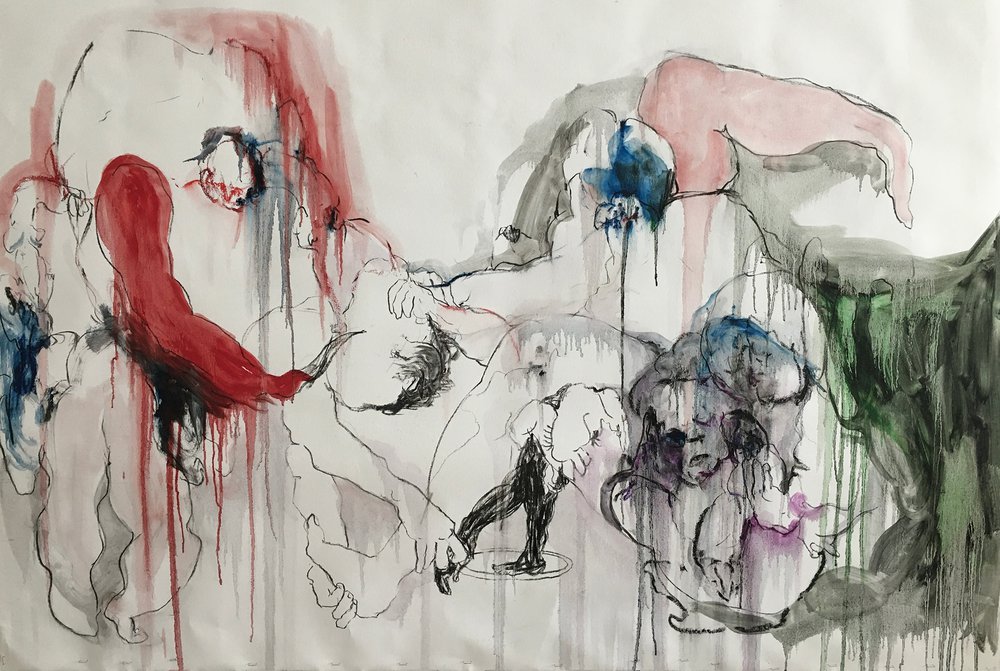
Irina Petrakova. The boundless horizon of violence, 2022. Courtesy of the artist
During Art Basel week, two Russian artists have exhibited their poignant recent works in the hallway of a former prison.
During Art Basel week you can find artworks in the most unlikely corners of this small, yet cosmopolitan city that spreads across the borders of Switzerland, France and Germany. Such as a former debtor’s prison in Basel’s quaint medieval Old Town. The impressive building that currently houses the city’s Museum of Music, is also a home for Centrepoint, a non-profit social club and a meeting point for the city’s English-speaking community.
For five years now, Basel-based curator Pavel Kovalenko has organised exhibitions of work by Russian artists in its hallway during Art Basel and also throughout the course of the year. Even now, in the face of disrupted air travel between Russia and Europe and numerous other political and economical concerns, this tradition continues. Two artists, Liza Bobkova from St. Petersburg and Irina Petrakova from Moscow, managed to make it to Switzerland, even carrying large-scale works in their suitcases. Bobkova, who is best known for works made out of shiny metal, has brought enormous textile banners and a notebook full of drawings, while Petrakova, who works in a variety of different media, from graphics to site-specific murals, is showing large works on paper, an edition print and a pair of embroidered sports pants!
The exhibition was orginally planned for September, yet in the meantime its context, and subsequently its content has changed dramatically. When the current crisis in Ukraine broke out, the artists and curator decided to press on with the project, yet focus on more recent works, created during the last few months. Throughout the Spring, both artists were documenting their emotional reactions while the world as we once knew it was falling apart around them. The exhibition is aptly named State of Disaster: feelings of acute anger, pain and sorrow spill out onto paper and canvases, which take the shape of expressive semi-abstract images. The tiny size of the hallway, paradoxically, seems to strengthen the message rather than weaken it. It feels too narrow and cramped both for the large-scale works by two artists and the enormous tragedy behind them.
Bobkova’s “Acid tears” are huge textile banners, partly discoloured by common household cleaning liquid with chlorine, flow down from the wall onto the floor and even “burst” out of the window. These are complemented by the graphic diary of the artist, filled with sketches she makes every day. “I began it last August when the words “Effect of non-freedom” somehow came into my mind”, the artist recalls. “The oppressive feeling was there even back then”. Petrakova, in contrast, notes that her style changed abruptly, once the crisis began. “I used to do very light, airy drawings and suddenly turned to colourful, fleshy painting”. Her earlier work, part of the project “Coming out” (2018), a pair of sports pants with an orchid embroidered on the crotch, have acquired new undertones now. Hanging low on the wall, the pant legs sweep the floor for a reason. For the artist, this is a criticism of toxic masculinity that has gone to ugly extremes right now, and should finally be “put on its knees”.







